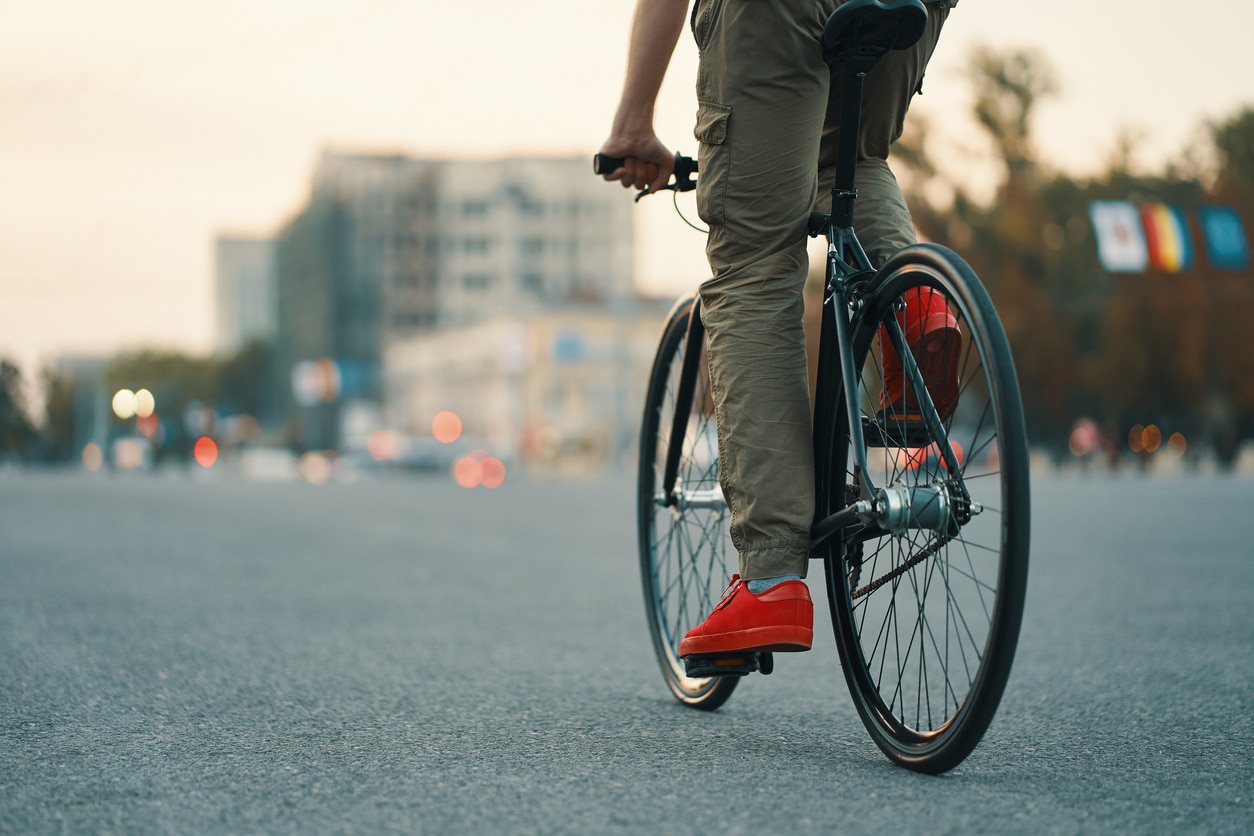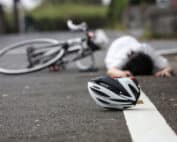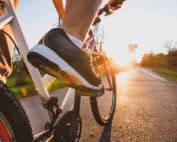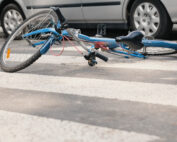People Powered Movement
America’s roads are dangerous. In fact, the United States reports more fatal and injury-causing traffic accidents than most other countries across the globe. European countries consistently report low incidents of traffic accidents. Why? Many countries in Europe have fully embraced bicyclists and pedestrians.
Visit a European country and you’ll be amazed at the infrastructure. American roads are built for cars and designed for speed. European roads are built to accommodate many modes of transportation and are designed for safety.
Increased bike lanes, sidewalks, and other safety measures will not only keep us safe but also increase the number of Americans who choose to bike or walk. This will have astounding benefits for our public and personal health and well-being.
About People Powered Movement
The mission of People Powered Movement is to make America a friendlier place for bicyclists and pedestrians through united advocacy efforts. As cities and towns across the country embrace changes in their infrastructure to accommodate bikes and walkers, America will become a safer place. Our goal is to provide useful information regarding bike and pedestrian safety and create, strengthen, and unite state and local bicycle and pedestrian advocacy organizations throughout North America.
Bicycle Accidents and Personal Injury Cases on the Rise
There were over 1260 bicyclists fatalities in 2020, an increase of 16% compared to 2019. In 2021, there were 7,485 pedestrian deaths in the U.S. — the largest number of pedestrian fatalities in four decades.
A recent study estimates that the costs of fatal and non-fatal bicycle accidents in the U.S. to be exceed $23 billion dollars each year. These costs include medical bills, productivity loss, and burden on the legal system due to personal injury lawsuits.
We recently interviewed a couple of accident and injury attorneys who handle these types of cases and their response is the same. According to Gregg Hollander, a bicycle accident lawyer in South Florida, “Bicycle accident personal injury claims are on the rise and it’s critical that accident victims stand up for themselves and fight for their legal rights”.
Florida is the leading state for bicycle accidents and fatalities. According to the US Department of Transportation, Florida had a total of 8,323 bicycle crashes in 2023, including 215 fatalities and 5,972 injuries.
Preliminary statistics for 2024 show that there has been 1 bicycle deaths and 128 injuries from bicycle crashes so far (as of 1/13/2024). “The number of bicycle and pedestrian accidents keep increasing every year. People should know that they can receive compensation if someone else negligently injures them while they are walking down the street or riding their bicycle to work,” says Sagi Shaked, a bicycle accident attorney in Miami, FL.
We have partnered with policy experts, advocacy organizations, cycling enthusiasts, and legal advocates to bring you data-driven information to help lawmakers at the state and federal level make informed decisions regarding biking and walking policies.
Increase in Bicycle Use & Walking Across the Nation
Across the country, an increasing number of Americans are ditching their cars and opting to bike or walk. In fact, the number of bicycle commuters in the country has nearly doubled (nearly 200%) in the last decade.
More cyclists have been popping up in cities and towns that have made efforts to make roads more bicyclist-friendly.
Cities with the highest percentage of biking commuters include:
- Portland, OR (6.3%)
- Washington, DC (5.0%)
- Minneapolis, MN (3.9%)
- San Francisco, CA (3.1%)
- New Orleans, LA (2.9%)
- Seattle, WA (2.8%)
Statistics show that the following American cities demonstrated particularly large increases in bicycle traffic in recent years:
- Houston, TX (138% increase)
- Los Angeles, CA (93% increase)
- New York City, NY (50% increase)
Bicycle sales as a whole also doubled in the US by March 2020. The source notes that this increase corresponds with the increase in demand for bicycling since the pandemic began.
Initiatives & Advocacy for Safer Streets
Many cities across the country are trying to do their part to increase the number of commuters who choose to use alternative modes of transportation. Why? Studies continue to show that when bicyclists and pedestrians have access to safe infrastructure, they embrace it.
Increased biking and walking is correlated with less traffic, fewer overall accidents, and increased health and well-being. Cities are beginning to understand that they can affect all of these changes by simply installing some inexpensive bicycle and pedestrian infrastructure measures.
Cities Responding to Advocacy Groups
After Portland, OR installed dedicated bike lanes and traffic-calming measures on its roads, the number of bicyclists in the city exploded. In fact, the changes allowed Portland to boast one of the highest percentages of bike commuting in the country.
Portland’s bike initiative was propelled, in part, thanks to a strong local advocacy campaign. This highlights the importance of organizing and campaigning for bicycle and pedestrian safety. When advocacy groups can show the city the benefits of embracing the bicycling and walking communities, change can happen.
Accidents Statistics
When there are more bicyclists and pedestrians on the road, fewer traffic accidents are reported. Since cities have begun to embrace alternative modes of transportation, the overall number of bike and pedestrian accidents has also declined. This is true despite a recent uptick in the number of fatal bike and pedestrian accidents across the city.
Bicycle Accidents Fatalities in the United States
Why is it important for advocacy groups to encourage cities and towns to embrace bike safety measures and bicycling programs?
Here’s why: Bicycle safety programs save lives. The bicyclist fatality rate has dropped substantially since cities began to designate bike lanes, provide information about bicyclist safety, and pass laws to protect cyclists.
- fatalities per million people in the United States.
- In 2011, the bicyclist fatality rate had dropped to 2.2 per million.
The rate of bicycle accident fatalities was literally cut in half. However, bike fatalities in the United States continue to outpace bike fatalities in countries with more sophisticated infrastructure designs.
Pedestrian Accident Fatalities in the United States
Increased awareness about pedestrian safety has also helped to reduce the rate at which pedestrians are killed on American roads to some extent. Pedestrian deaths have decreased 13% from 1975 to 2020, although they’ve increased 59% from their lowest point in 2009. Pedestrian fatalities actually increased 4% from 2019 to 2020.
In recent years, distracted walking has become a significant issue in many areas of the country. States like California that see especially high foot traffic have seen an increase in pedestrian fatalities. David Munoz, a prominent personal injury attorney with Mission Personal Injury Lawyers in San Diego, has theorized that certain walking practices are to blame.
Munoz believes that the rise in pedestrian fatalities could be due in part to practices like texting and walking. “People are not using caution when walking on our streets and sidewalks. They’re too busy looking at their phones to be aware of what is going on around them. Many avoidable accidents are occurring as a result.”
Hit and Run Accidents Involving Pedestrians & Bicyclists
Hit-and-run accidents, particularly those occurring in urban areas, are becoming increasingly more dangerous for pedestrians and bicyclists. The National Highway Traffic and Safety Administration (NHTSA) reported that there were 26% more hit-and-run fatalities in 2020 than there were in 2019. A total of 24% of all pedestrian fatalities involved a hit-and-run in 2020 as well as 22% of bicyclist fatalities.
Biking and walking are becoming more popular in cities like New York and Chicago, but these urban areas are not keeping up with the demand for safer bicycle and pedestrian infrastructure. This forces bicyclists and pedestrians to share busy and overcrowded roads with passenger vehicles, putting them at an increased risk of injury and death.
While states like Illinois and New York may not have the most bicyclist and pedestrian-friendly infrastructure, drivers are encouraged to exercise caution when sharing the road. Failure to use care can result in serious criminal consequences. Until urban areas can revitalize and revamp their roadways to make commuting safer for bicyclists and pedestrians, the threat of criminal penalties will act as a deterrent to dangerous driving.
Benefits of Bicycling & Walking
Why have bicycling and walking become so popular? Research shows that there are five motivating factors: traffic, physical health, mental health, social, and environmental.
Traffic
There is no denying that American roads are becoming increasingly congested. Unfortunately, as more drivers take the road, fatal and injury-causing accidents happen more frequently. As a result, drivers are ditching their cars and opting to bike and walk. More bikes and walkers will lead to a decline in traffic and, hopefully, reduce the number of accidents on American roads.
Physical Health
Traveling by car can be disastrous for our health. Getting out and moving, whether on a bicycle or by foot, has demonstrated health benefits. Individuals who bike or walk regularly report lower rates of heart disease, cancer, and obesity.
Mental Health
There is no substitute for some quality Vitamin D therapy. Getting your blood flowing while exposing yourself to the sun can do wonders for mental health. Bicyclists and pedestrians generally report having less anxiety and fewer depressive episodes than those individuals strictly rely on a car.
Social
The bicycling community in America is growing. Biking is no longer just a way to get from Point A to Point B, but an opportunity to engage with like-minded people.
Environmental
Ditching the car and choosing to bike or walk is especially important for the environment. Transportation is responsible for approximately 27 percent of the United States’ global greenhouse gas emissions. More cyclists and pedestrians will lead to fewer cars on the road. Fewer cars should help to combat the growing global climate crisis.
Bicyclist & Pedestrian Safety
Increased accessibility to biking and walking infrastructure will be incredibly beneficial for the public health. New bike lanes will not only resonate with experienced riders, but encourage new cyclists to hit the roads, as well. If riders of all experience levels do not understand their obligations on shared roads and fail to exercise proper caution, accidents and injuries will happen. Bicyclists and pedestrians must take the initiative to be prepared, cautious, and safe.
Bicyclist Safety
Safety Gear: Bicyclists tend to suffer serious and life-threatening injuries when they are involved in traffic accidents because, unlike passengers in an enclosed vehicle, they are vulnerable to the outside elements. Make sure that you purchase and wear any safety gear, including helmets and gloves, before hitting the open road.
Bike Maintenance: Before hitting the road, bicyclists should make sure that their bike is in proper working condition. Routine maintenance will help to keep your bike from failing on the road.
Visibility: You and your bike should be equipped with proper safety reflective devices. Consider installing reflective discs and flags on your bike and wearing reflective materials. Visibility is essential to reducing bike accidents.
Obey the Rule of the Road: Are you familiar with your city’s local bike laws? Do you know your obligations as a cyclist when you’re sharing the road with other vehicles? What hand signals can you use to communicate with other drivers? Brushing up on your responsibilities as a cyclist will keep you safe.
Pedestrian Safety
It seems as though more pedestrians are on America’s roads than ever before. Even if your town has installed sidewalks, painted crosswalks, and installed electronic signals for pedestrians, your safety cannot be guaranteed. You must be alert and aware at all times when you are walking alongside traffic.
Make sure that you understand local pedestrian laws. An increasing number of towns are passing legislation to reduce the number of pedestrian deaths. These ordinances can prohibit and/or require certain behavior. Violations can be dangerous and result in harsh fines and penalties. While cities are embracing pedestrians, safety is ultimately your responsibility.
For more information, see our benchmarking report and more information on past benchmarking reports.
LATEST ARTICLES
Brentwood Bicycle Safety Overview: Infrastructure And Crash Stats
Many Tennessee residents prefer to travel by bicycle. Bicycles offer several advantages over traveling by
Most Bike-Friendly Neighborhoods in Houston, TX
Anytime Estimate recently released a study that ranked 50 major U.S. cities based on how
Louisville Bicycle Safety Overview: Infrastructure and Crash Statistics
Across Kentucky, 330 bicyclists were involved in collisions with motor vehicles during 2021. These bicycle
Lawrenceville Bicycle Safety Overview: Infrastructure and Crash Stats
Are you planning to cycle in the Lawrenceville area? This primer will cover the Gwinnett





